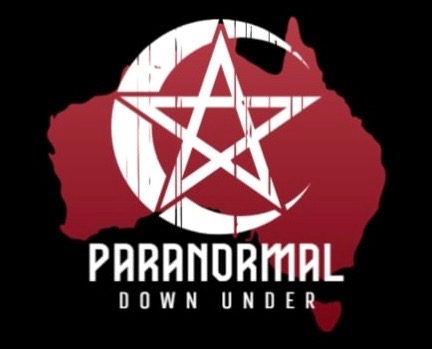
How to Start as a Paranormal Investigator (Step-by-Step Beginner’s Guide)
So you’ve finally done it, you’ve gathered your first set of ghost hunting gear, from your EMF detector and EVP recorder to a trusty flashlight and maybe even a night vision camera. You’ve watched investigators on YouTube, followed paranormal groups online and can’t wait to get out there and experience the thrill yourself.
But where do you begin once your equipment is ready?
Becoming a successful paranormal investigator takes more than curiosity, it takes patience, practice and a deep understanding of both your tools and your environment. Before you head into private homes or infamous haunted locations, it’s crucial to spend time learning your gear, testing techniques and understanding the natural world around you.
This guide will walk you through exactly how to start as a paranormal investigator, safely, respectfully and effectively.
1. Learn Your Equipment Before You Hunt
Every tool you bring into an investigation serves a purpose, and knowing exactly how it works can mean the difference between capturing real evidence and misinterpreting natural phenomena.
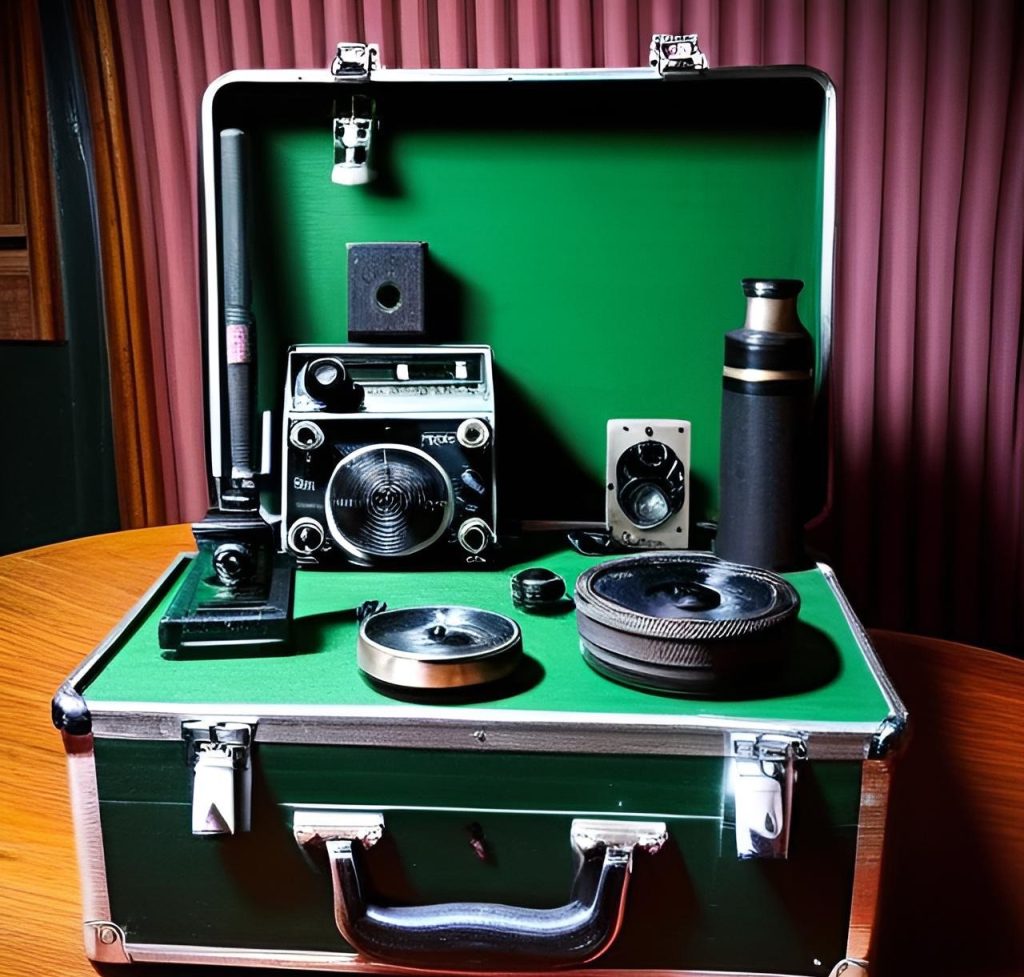
EMF Detectors
An EMF detector measures electromagnetic fields, which some believe spirits can manipulate to commuicate. But before assuming every spike is paranormal, test your detector near electrical wiring, phones or appliances to see what normal interference looks like. Learn its behaviour so you can recognise genuine anomalies.
EVP Recorders
Your digital recorder is one of your most important tools for capturing Electronic Voice Phenomena (EVPs), possible spirit voices. Practice using your recorder in quiet spaces to understand how different background noises sound during playback. The more you know what’s normal, the easier it’ll be to identify the unexplainable.
Spirit Boxes
A spirit box rapidly scans radio frequencies, creating white noise and short bursts of sound that spirits may manipulate to form words. Before assuming communication, listen to your device in various areas so you understand what random radio chatter sounds like versus intelligent responses.
Infrared or Full-Spectrum Cameras
Cameras can capture light spectrums unseen by the human eye. Take practice photos and videos in dim or low-light environments to study how dust, moisture and insects appear on camera. This helps you avoid misidentifying natural elemtns as orbs or light anomalies.
2. Practice Makes Perfect – Start in Public Graveyards
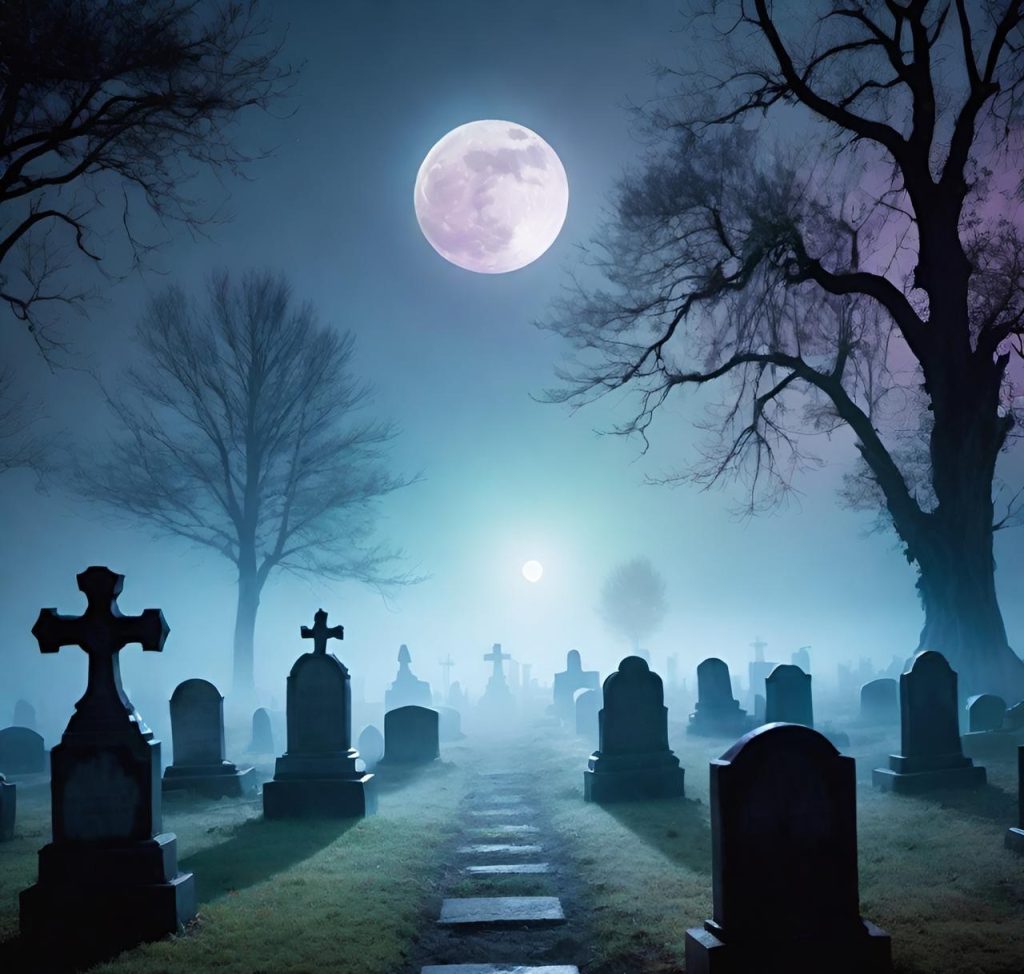
Once you’re comfortable with your gear, it’s time to test it in a real environment. Public cemeteries and historical graveyards are the perfect training grounds for beginner investigators.
Here’s why:
- Accessibility: Public graveyards are often open or allow access with permission, making them ideal for beginners.
- Rich History: Cemeteries hold countless stories, dates and names that make for intriguing investigations.
- Low Pressure: You’re not investigating for a client, so you an focus on learning, not performing.
When visiting a cemetery for paranormal practice:
- Always research the site first and ensure it’s legally accessible.
- Be respectful, avoid wakling directly over graves or disturbing markers.
- Take time to observe the environment, notice natural noises, light sources and temperature changes.
- Use the opportunity to memorize your equipment setup. Practice setting up your recorder, callibrating your EMF and scanning with your camera.
The goal isn’t to capture something paranormal right away, it’s to learn how your equipment behaves in the real world, so when something truly unusual happens, you’ll recognise it immediately.
3. Learn the Art of Debunking Early
A great paranormal investigator is also a great skeptic. It might sound strange, but skepticism protects credibility. Before declarring anything “paranormal”, work through all possible natural explanations.
Here’s an idea of some things to look for:
- Electrical Interference: Wires, routers and power sources can trigger EMF spikes.
- Environmental Noises: Wind, animals and even far-off cars can cause strange sounds.
- Light anomalies: Dust, bugs and reflections can look like glowing orbs or figures.
By debunking first, you build integrity, and when you do capture something you can’t explain, your evidence will carry far more weight.
4. Focus on Documentation
Every experienced investigator knows the importance of good documentation. During every Investigation, take note of:
- Time and date
- Weather and temperature
- EMF readings
- Personal feelings or sensations
- Equipment activity
Afterwards, review your recordings carefully. True evidence often hides in the details, an EVP you didn’t hear in the moment, a flicker on camera or a temperature change captured by your meter.
This documentation process helps you refine your skills, track patterns and build your own investigation style over time.
5. Build Experience Before Private Investigations
Before you move on to private residences or famous haunted locations, spend time investigating open or public spaces. You’ll develop confidence in your methods and learn how to handle different settings, urban, rural, rural and outdoor.
Eventually, consider joining or collaborating with an established paranormal investigation group. Many teams host open investigations or training nights where newcomers can learn proper techniques, safety protocols and ethical investigation standards.
Learning from seasoned investigators will help you:
- Understand how to approach clients respectfully
- Handle evidence review as a team
- Use advanced equipment safely and effectively
- Maintain professionalism in sensitive or emotional environments
6. Respect is Key
Respect is one of the most important traits of any paranormal investigator. Whether you’re in a graveyard, an abandoned building or someones home, always act respectfully toward the environment and the potential spirits you’re attempting to communicate with.
Avoid provoking, shouting or demanding responses. It’s not about confrontation, it’s about communication.
Remember: every investigation is a mix of science, intuition and empathy.
Final Thoughts: Your Paranormal Journey Begins Here
Starting as a paranormal investigator isn’t about catching the biggest ghost story, it’s about learning, observing and understanding the unknown.
By mastering your equipment, practicing in respectful and accessible locations like public graveyards and developing a balance of curiosity and skepticism, you’ll lay the foundation for a meaningful and credible paranormal investigation career.
So now that you have your first set of ghost hunting gear, get out there, stay safe, take your time and let your curiosity lead the way. The more you learn, the more the paranormal world opens up to you.

Night Visions Cameras In Paranormal Inestigations: Seeing Beyond the Darkness
When night falls and the world grows quiet, that’s when paranormal investigations truly come alive. Investigators around the globe rely on one crucial piece of equipment to reveal what hides in the dark: the night vision camera.
These cameras do more than record in low light, they capture what the human eye cannot see. For ghost hunters and paranormal teams worldwide, night vision cameras are essential for uncovering the mysterious and unexplained phenomena that occur in dark and abandoned locations.
Why Night Visions Cameras Are Essential in Paranormal Investigations
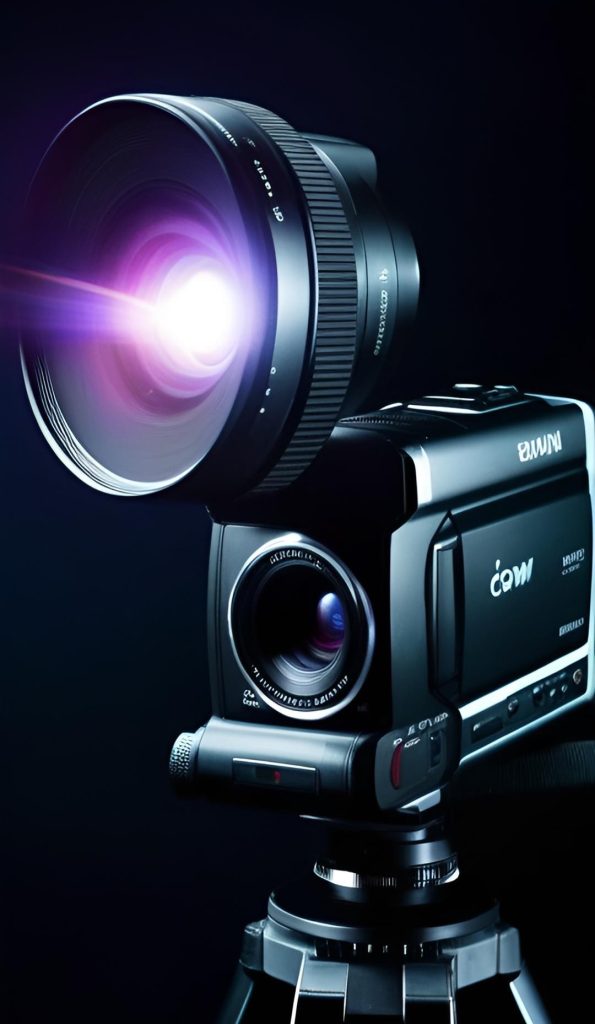
Many paranormal investigations take place after dark, not only for atmosphere, but because low light conditions are believed to increase the likelihood of activity, or at least the likelihood of you noticing the activity.
In pitch-black hallways, basements or abandoned buildings, human vision is limited. Night visions cameras allow investigators to see into the dark and document potential evidence that would otherwise go unnoticed.
Key Benefits of Night Visions Cameras in Paranormal Work:
- See in total darkness: Capture every movement and anomaly without disturbing the environment with visible light.
- Record potential evidence: Night visions footage can reveal shadows, orbs and other unusual movements.
- Review and verify: Investigators can study the recordings frame by frame for analysis and validation.
- Maintain investigative conditions: Working in darkness preserves the natural environment, which may influence paranormal activity.
- Safety: navigating dark or hazardous locations is much safer with night visions visibility.
Whether you’re exploring an abandone asylum, a historic mansion or a secluded rural building, night vision cameras help capture every subtle movement or anomaly.
How Night Visions Cameras Work
Night vision technology extends the range of light we can detect. While humans see only the visible spectrum, these cameras detect Infrared (IR) and sometimes Ultrviolet (UV) light as well.
There are two main types of night vision use in paranormal investigations:
1. Infrared (IR) cameras
- The most common choice for investigators.
- Use infrared illuminators that emit light invisible to the human eye but detectable by the camera.
- Ideal for total darkness in indoor investigations or remote locations.
2. Image Intesification (Traditional Night Vision)
- Amplifies the smallest available ambient light, producing familiar green-tinted imagery.
- Often used outdoors where some natural light is present.
Many investigators also use full-spectrum camers, capturing visible, IR and UV light, under the belief that paranormal phenomena my appear outside the normal visible spectrum.
Choosing the Right Night Visions Camera for Paranormal Work
Not all camera are created equal. When selecting equipment, consider:
- Infrared capability: Ensure it has a strong IR illuminator or supports an external one.
- Baterry life: Investigations can last hours, extra batteries are essential.
- Resolution: HD or 4K video helps distinguish between dust, insects and potential anomalies.
- Audio recording: Built-in or external microphones allow simultaneous EVP recording.
- Mounting options: Tripods or static mounts enable multi-angle coverage of hotspots.
Investigators often combine IR-modified camcorders, action cameras and stationary infrared cameras to monitor multiple locations during overnight investigations.
Tips for Using Night Vision Cameras Effectively
To capture the clearest and most credible footage:
- Conduct a baseline sweep: Identify mirrors, reflective surfaces or dust that may cause false positives.
- Use static cameras: Place them in known or suspected hotspots for continuous monitoring.
- Keep cameras steady: Tripods or stabilizers, such as the gimble, reduce motion blur or misleading effects.
- Combine with other equipment: EMF detectors, EVP recorders and temperature sensors can help correlate activity.
- Make timestamps verbally: Make it easier to locate events during footage review.
Clear, well-recorded footage is far more valuable than blurry or ambiguous clips.
Reviewing and Nalaysing Night Vision Footage
After the investigation, reviewing foorage is crucial. Look for unusual movements, shadows or light anomalies. Cross-check footage with environmental notes to rule out natural causes such as insects, reflections or dust.
Paranormal research relies on debunking everything explainable first, leaving only phenomena that remain unexplained to be considered potentially paranormal.
Why Night Vision Cameras Matter in Paranormal Research
Around the world, haunted locations abound, historic buildings, abandoned hospitals and secluded rural sites often host unexplained activity. Night vision cameras give investigators eyes in the dark, capturing moments that would otherwise remain hidden.
For paranormal teams, these cameras are more than talls, they are essential for documenting evidence, studying phenomena and sharing findings with the wider community.
Final Thoughts
The most compelling paranormal evidence often appears when the lights go out. Night vision cameras allow investigators to se the unseen, capture credible evidence and explore the mysteries that exist in the shadows.
If you’re serious about ghost hunting or paranormal investigation, a reliable night vision camera is one of your most important tools, because sometimes, the extraordinary happens in the darkness.

Demonic Possession: The Stages, Signs and How to Protect Yourself
For centuries, tales of demon possession have haunted humanity’s imagination. From biblical accounts of exorcisms to chilling modern cases, possession remains one of the most feared and controvesial subjects in the paranormal field.
While skeptics view it as a product of psychology or superstition, believers consider it undeniable proof of dark spiritual forces. Regardless of belief, understanding the stages and how to protect yourself from these molevolent entities is vital for anyone interested in the paranormal world.
What is Demonic Possession?
Demonic possession occurs when an evil, often non-human, spirit gains control over a person’s mind, body or soul. It’s often described as a process rather than a single event, beginning subtly and escalating until the victims free will is overridden.
Those who claim to experience possession often report drastic personality changes, blackouts, violent outbursts or speaking in unknown languages. Many religious texts and case studies also describe physical manifestations such as strength beyond normal limits, aversion to sacred objects or knowledge of hidden truths.
Although explanations differ, from spiritual warfare ro mental illness, the symptoms remain eerily consistent across cultures and time.
Historical Background

Reports of possession stretch back thousands of years. Ancient Sumerians wrote of evil spirits that entered the body, while Egyptian texts describe priests driving out “malevolent forces”. In the christian tradition, Jesus performed exorcisms as acts of divine authority. Similarly, Hinduism and Buddhism include rituals for casting out negative entities known as bhuts or pretas.
Even today, exorcisms are performed by priests, shamans and healers worldwide, and the Vatican continues to train specialized exorcists. Despite advances in medicine and psychology, the fear of demonic possession remains embedded in modern culture, from documentaries to horror films inspired by real events.
The Four Stages of Demonic Possession
Although every case is unique, most documented possessions follow a recognizable pattern. Below are the fuor stages commonly recognized by exorcists and paranormal researchers.
1. Infestation
This is the inital phase, often mistaken for a haunting. The entity attaches itself to a location, object or person.
- Common signs include knocks, whispers, cold spots and electrical disturbances.
- The activity gradually becomes more personal and threatening.
- Victims often feel watched or drained of energy.
The purpose of infestation is simple: to instill fear and open the door for deeper influence.
2. Oppression
Once the spirit establishes a connection, it begins to attack the victim mentally, emotionally and spiritually.
- Sleep paralysis, vivid nightmares or sudden depression may occur.
- The individuals life may spiral into chaos, financial problems, illness or constant bad luck.
- The victim may feel hopeless, angry or isolated.
This phase is where the entity tries to break down a persons faith, confidence and self-control, paving the way for full possession.
3. Obsession
At this point, the entitys presence domincates the victims mind.
- The person hears voices, experiences intrusive thoughts or becomes fixated on dark or violent ideas.
- They may withdraw from loved ones and lose interest in normal life.
- Fear and confusion become constant companions.
During this stage, the demons influence is psychological and emotional. The victim feels trapped inside their own thoughts, often believing there’s no escape.
4. Possession
The final and most dangerous phase occurs when the entity takes control of the body.
- The person may enter trance-like states or blackouts.
- Their voice, mannerism or language may change drastically.
- Religious objects provoke violent or aggressive reactions.
- Witnesses may describe unnatural strength and sudden knowledge.
This stage is considered a total loss of autonomy. Intervention by clergy, spiritual healrs or experienced exorcists is often sought to reclaim the persons body and soul.
Protecting Yourself from Demonic Possession
While true demonic possession is said to be rare, those who investigate and interact with the paranormal should always take precautions. Protection techniques vary across faiths and traditions, but the goal is univeersal: maintaining strong spiritual, emotional and energetic defenses.
1. Maintain Strong Spiritual Boundaries
Regular prayer, meditation or spiritual grounding helps with strengthening your aura and can help to repel negative entities. Whether you’re religious or not, focusing your intent on light, peace and protection creates a powerful energetic shield of sorts.
2. Avoid Provocation
Inviting or challenging dark entities during investigations can open dangerous doorways. Never use a Ouija Board, not even if you believe you know what you’re doing with it. Avoid ritual-based tools unless you fully understand how to close the session safely.
3. Use Protective Symbols and Objects
Crosses, pentagrams, crystals or blessed items are believed to repel malevolent forces. Sage, frankincense or holy water can also be used to cleanse spaces after investigation.
4. Ground and Cleanse Regularly
after investigating or entering spiritually active areas, ground yourself by visualizing negative energy flowing out and being replaced by light. Cleansing baths with sea salt or protective herbs can help restore balance.
5. Keep a Clear and Healthy Mind
Entities are said to target individuals who are emotional unstable, exhausted or deeply fearful. Regular rest, a positive mindset and emotional stability make you far less vulnerable to spiritual attacks.
6. Call for Spiritual or Professional Help
If symptoms of opression or possession appear, seek assistance from a trusted priest, spiritual healer or paranormal team. In some cases, professional therapy can help rule out psychological causes and provide much-needed support.
Are All Possessions Truly Demonic
Not every possesion-like experience involves a demon. Many paranormal investigators note that earthbound spirits, those who died suddenly or violently, may attach themselves to the living out of confusion rather than malice. Similarly, trauma, stress and sleep disorders can produce experiences that mimic supernatural phenomena.
A balanced approach is essential: always debunk before you conclude. Understanding the line between psychology and spirituality helps protect both the mind and spirit.
Final Thoughts
Demonic possession represents the darkest side of the paranormal, a chilling reminder of what happens when unseen forces cross into the human realm. Whether viewed as a battle between good and evil or a psychological manifestation of fear, the phenomena continues to captivate, terrify and inspire investigation.
For those who explore the unknown, respect and protection are the keys to staying safe. Never underestimate the power of intent, and always remember: not every shadow deserves your attention.

EVP Recorders: Capturing Voices from Beyond & Proven Techniques for Paranormal Investigations
In the world of ghost hunting and paranormal research, few tools are as intriguing, or as essential, as the EVP recorder. Believed to capture disembodied voices or mysterious sounds from beyond the veil, EVP (Electronic Voice Phenomena) recordings have become one of the most compelling forms of evidence in the field of paranormal investigation.
Whether you’re a seasoned investigator or a beginner curious about the unseen, understanding how EVP recorders work, and how to use them effectively, can make all the difference in uncovering authentic, unexplained voices.
In this guide, we’ll explore what EVP recorders are, how they’re used and several professional investigation techniques that can help you capture credible evidence of spirit communication.
What is an EVP Recorder?
An EVP recorder is typically a digital audio device used to capture sound frequencies beyond what the human ear can detect. While ordinary recorders can sometimes pick up unexplained voices, investigators often use high-sensitivity digital recorders designed to capture even the faintest disturbances in the environment.
EVP recorders are often preferred over the smartphone microphone because they:
- Capture a wider frequency range.
- Produce cleaner audio with less compression.
- Allow for longer recording sessions and better file management.
- Can be paired with professional analysis software.
Some modern paranormal investigators also use multi-channel recorders or synchronised setups to compare results and rule out false positives.
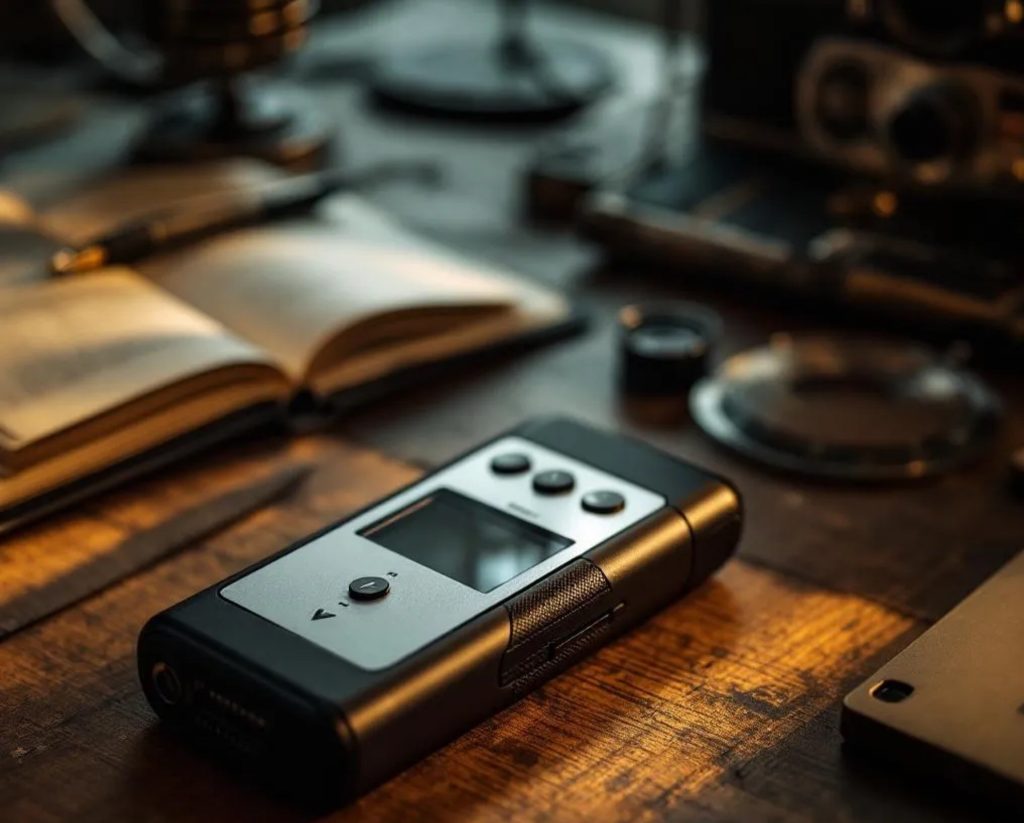
How Do EVP Recorders Work?
The theory behind EVP is that spirits or residual energy can manipulate ambient sound frequencies or electromagnetic energy to produce speech-like patterns. These sounds are often inaudible during the session but become clear upon playback.
There are three general types of EVP classifications:
- Class A: Clear and easily understandable without enhancement.
- Class B: Audible and partially understandable, but may require light filtering.
- Class C: Faint, unclear and open to interpretation.
Most genuine EVPs fall into the Class B category, making careful review and analysis crucial for credibility.
Why EVP Recorders Are Vital in Paranormal Investigations
EVP recorders bridge the gap between the physical and spiritual worlds. While other tools, like EMF detectors or motions sensors, can indicate activity, EVP offers something far more compelling: potential communication.
Investigators use EVP recorders to:
- Capture spirit voices or whispers that respond to questions.
- Gather contextual evidence linked to specific events or objects.
- Document unexplained phenomena occurring simultaneously with other readings (such as EMF spikes or temperature drops).
EVP sessions often serve as the core evidence of an investigation, providing moments where the unseen makes its presence known through sound.
Proven Techniques for Capturing EVP
There’s both art and science involved in conducting EVP sessions. Success often depends on your patience, environment and approach. Below are some of the most reliable EVP techniques used by investigators worlwide:
1. Direct Question and Answer Sessions
This is the foundation of EVP work. Investigators ask clear, direct questions and leave gaps of 10-15 seconds between each to allow potential responses. Keep questions simple, respectful and open-minded.
Example Questions:
- “Is anyone here with us tonight?”
- “Can you tell us your name?”
- “Do you know what year it is?”
- “Why are you here?”
It’s important to maintain a calm and inviting tone, spirit communication is often said to be influenced by energy and intent.
2. Controlled Silence Sessions
Not all EVP captures come from direct questioning. Some of the most startling voices appear during moments of silence, when investigators aren’t speaking at all.
In this technique, you allow the recorder to run in a quiet room for several minutes. No questions, no movement, just ambient recording. These “passive captures” are considered [pwerful because they occur naturally, without investigator input.
3. Trigger Object Sessions
A trigger object is an item believed to provoke interaction or recognition from a spirit. This can include toys, old coins, jewelry, tools, photographs or anything linked to the history of the location or the spirit.
You can set a recorder near the trigger object and ask relevant questions:
- “Did this belong to you?”
- “Can you move this for us?”
- “Does this object mean something to you?”
By giving spirits something familiar or emotionally charged, you increase the likelihood of a response.
4. EVP Burst Sessions
An EVP burst session is one of the most effective modern techniques in ghost hunting. Instead of recording for hours and sifting through endless audio later, investigators conduct short, focused recording sessions. Usually 2 to 5 minutes long (Although i often only do 30 to 60 seconds), followed by immediate playback.
During playback, the team listens for responses in real time. If something is captured, investigators can then ask follow-up questions based on the potential response, adjusting their line of inquiry instantly.
Benefits of Burst Sessions:
- Faste feedback and more dynamic interaction.
- Better control over environmental changes (like footsteps or background noise).
- Easier to isolate and tage responses.
This technique not only saves review time but also enhances the sense of real-time communication during an investigation.
5. Tagging Sounds for Accuracy
Environmental sounds, like footsteps, whispers or coughing, can easily be mistaken for EVPs during review if not properly documented. Professional investigators use a method known as tagging to verbally note any noises they make during a sessiosn.
For Example:
- “That was me moving the chair.”
- “That sound was from the hallway.”
- “(name) just coughed.”
Tagging helps you eliminate false positives later and keeps your evidence credible when sharing with others.
6. Multiple Recorder Placement
To verify the authenticity of a sound, many investigators place two or more recorders in different areas of the investigation site. If a voice is captured on only one recorder, it may indicate a localized anomaly rather than a sound coming from a human source or external interference.
This technique also helps rule out echoes, contamination and overlapping dialogue between team members.
7. Time-Staggered Recording Sessions
Paranormal activity can fluctuate depending on the time of night or the energy in the environment. Conducting EVP sessions at different intervals, early evening, midnight, pre-dawn, can help identify activity patterns and determine when communication is strongest.
Some investigators report increased results during what’s known as the “Witching Hour” (3:00 a.m.), when spiritual energy is believed to be most active.
Reviewing and Analyzing EVP Recordings
After a session, the real work begins. Proper analysis ensures your findings remain credible and professional.
Tips for Reviewing EVP Recordings:
- Use high-quality headphones to catch subtle whispers or low-frequency sounds.
- Listen in a quiet room and play sections multiple times before labeling them as EVP.
- Cross-check timestamps across multiple recorders and cameras.
- Avoid over-editing or applying heavy filters, keep the raw audio intact for authenticity.
- Keep a detailed logbook noting time, location, questions asked and responses heard.
Remember: credible evidence speaks for itself. Over-interpretation or enhancement can weaken your findings.
Professional Tips for EVP Success
- Stay Respectful: Treat every investigation as if you are entering someone’s space.
- Keep Sessions Short and Focused: Spirits may respond better to short bursts of attention rather than long, drawn-out recordings.
- Minimize Contamination: Keep teams small to avoid whispering during active recording.
- Document Everything: Combine your audio evidence with notes, video and environmental readings.
Final Thoughts
EVP recorders are more than just gadgets, they are the voice of the unknown, offering a rare chance to connect with energies and entities that exist beyond our understanding.
By using professional techniques like EVP burst sessions, tagging and trigger objects, investigators can capture more compelling, credible evidence while maintaining scientific discipline and respect for the unseen.
Whether you’re a beginner exploring your first haunted location or a veteran ivnestigator chasing that elusive Class A EVP, remember: patience, precision and respect are your greatest tools.
So the time you hit “record”, you might just hear something… unexpected.
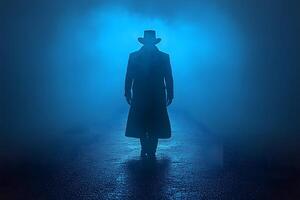
What is a Paranormal Investigator? A Look at the Field of Paranormal Research
In recent years, interest in the paranormal has grown significantly. From television programs to private research teams, the pursuit of understanding the unknown has evolved into a structured and professional field of study. At the centre of this work is the paranormal investigator. An individual dedicated to researching, documenting and analysing unexplained phenomena with a balanced approach that blends science, history and open-minded inquiry.
Defining a Paranormal Investigator
A paranormal investigator is a trained researcher who examines reports of unexplained occurences, often associated with hauntings, apparitions or other phenomena that fall outside the normal scientific explanation. Their objective is not merely to prove the existence of the supernatural, but to seek the truth through methodical investigation and evidence-based analysis.
Professional investigators approach each case with discipline and objectivity, gathering data through both technological and observatrional methods. Their findings contribute to a broader understanding of the potential relationship between environmental, psychological and spiritual factors in reported paranormal activity.
Core Responsibility of a Paranormal Investigator
Paranormal investigations involve careful preparation, systematic data collection and comprehensive evidence review. Each stage of the process plays a vital role in maintaining professionalism and credibility.
1. Preliminary Research
Before conducting any fieldwork, investigators perform detailed background reseach on the location or case. This includes reviewing historical records, interviewing witnesses and assessing environmental conditions. Understanding the history and context of a site is crucial in distinguishing legitimate anomalies from naturally occuring explanations.
2. Equipment Setup and Calibration
Modern investigators employ a range of instruments to collect measurable data such as:
- EMF Meters: Detect fluctuations in electromagnetic fields.
- EVP Recorders: Capture potential audio phenomena not heard during investigation.
- Spirit Boxes: Facilitate real-time audio scanning for possible responses.
- Thermal and Infrared Cameras: Detect variations in temperature and visual anomalies in low light conditions.
All Equipment is tested, calibrated and documented before and after each investigation to ensure accuracy and eliminate false readings.
3. Field Investigation and Data Collection
During an investigation, teams work methodically, recording environmental changes, conducting EVP sessions and mainting detailed logs. Communication is kept professional and respectful, particularly in historic or private locations. The emphasis remains on evidence collection and environmental monitoring, not on provocation or entertainment.
4. Evidence review and Analysis
Following the investigation, all collected data, including video, audio and environmental readings, is thoroughly reviewed. Investigators look for inconsistencies, patterns or unexplainable results. A significant portion of professional paranormal work occurs during this analysis stage, often taking days or weeks to complete.
5. Debunking and Verification
A critical aspect of responsible investigation is debunking, identifying logical or environmental explanations for percieved paranormal activity. Professional teams approach all evidence with a healthy degree of skepticism, ensuring that any remaining anomalies are genuinely unexplained and not the result of natural interference.
Why People Choose to Investigate the Paranormal
The motivation behind paranormal investigation are varied, but they often stem from a combination of curiosity, compassion and a desire for understanding.
Scientific and Intellectual Curiosity
Many investigators are motivated by the pursuit of knowledge. They aim to better understand phenomena that challenge conventional science, approaching the unknown with disciplined methodology.
Assisting Others
Paranormal investigators are frequently called upon to help property owners, families or businesses experiencing unexplained disturbances. By identifying the cause, be it environment, psychological or potentially paranormal, they provide reassurance and clarity to those affected.
Historical and Cultural Preservation
Investigations often take place in historic locations. Through research and documentation, investigators help preserve stories, traditions and events that might otherwise be forgotten, contributing to broader cultural and historical awareness.
Personal and Spiritual Exploration
For some, the word is deeply personal. Individuals who have had their own unexplained experiences often seek to understand them through structured, professional investigation.
The Evolving Role of the Paranormal Investigator
Modern paranormal investigators strive to balance open-mindedness with scientific integrity. While the field remains largely outside mainstream academia, advances in technology and data analysis have brought increased professionalism and structure. Many teams now follow standardised protocols, maintain ethical guidelines and collaborate with other disciplines such as psychology, environmental science and history.
This blend of science, empathy and respect for both the living and the deceased defines the modern approach to paranormal research.
Conclusion
A paranormal investigator is not merely a ghost hunter, they are a researcher, historian and analyst dedicated to uncovering the truth behind unexplained events. Through disciplined methodology, ethical practice and evidence based inquiry, they bring structure and credibility to a field that has fascinated humanity for centuries.
Whether exploring historic sites or helping those affected by mysterious occurences, the goal remains constant. To better understand the unknown while maintaining respect for the stories, people and places connected to it.
